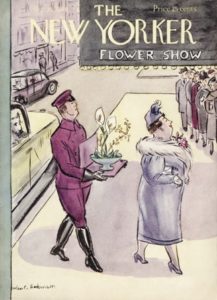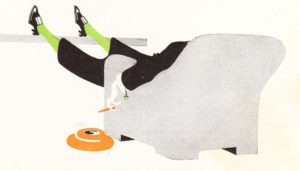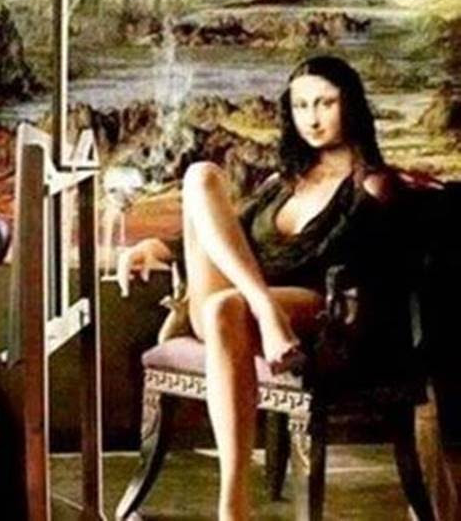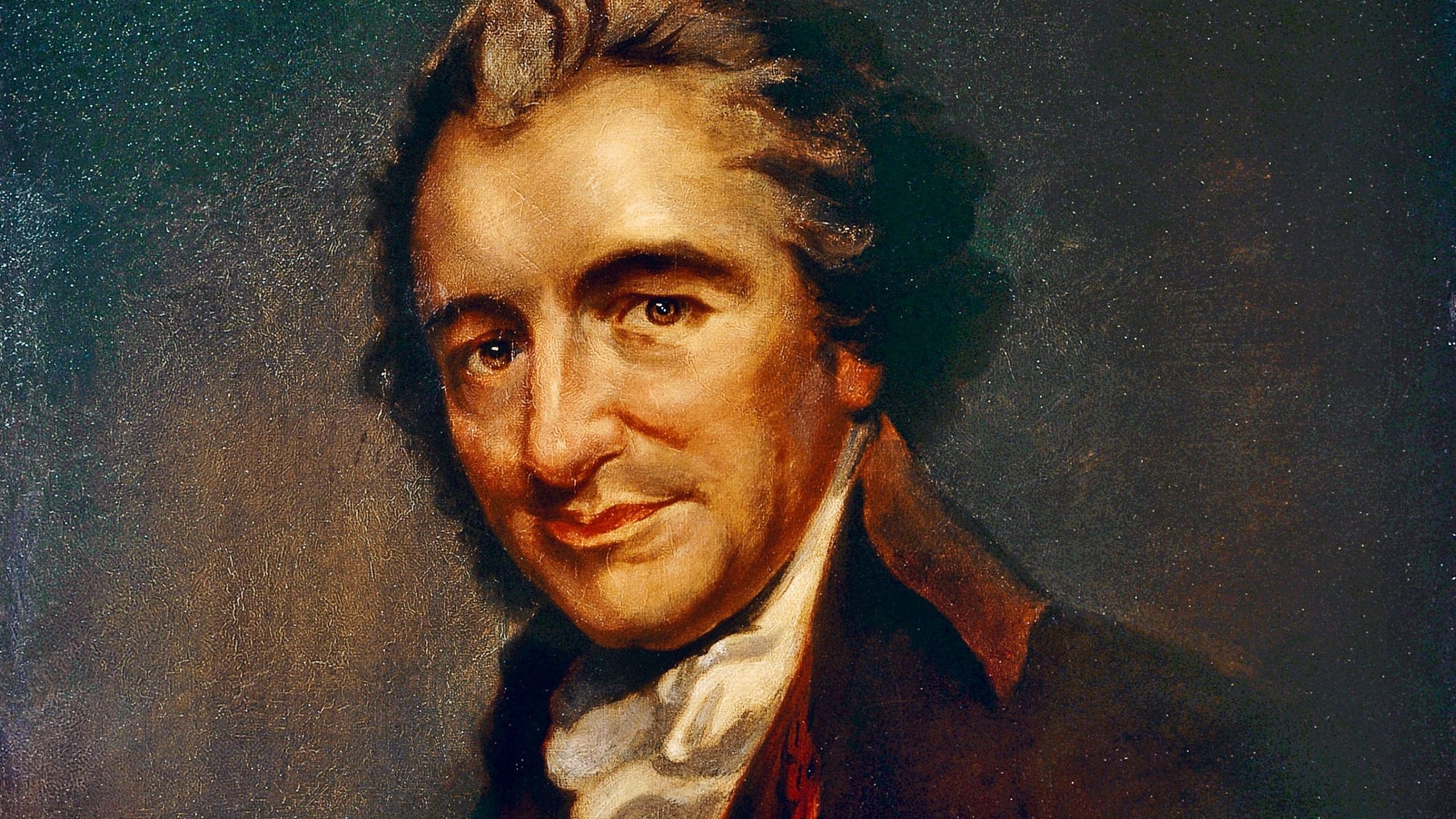In 2011 I posted a really delightful piece…since I didn’t really write it, largely a cut-and-paste job…called “Meet the Girls of New York; the Original Grand Dames of New York were Republicans” and mostly taken from the pages of “The New Yorker”. (I deleted it because most of the cartoons I used have been lost.)

Mostly from World War II, it poked fun at the richer elements of New York ladies of that day, largely because they were Republican wives and were giddy, and “The New Yorker” had been making fun of them at least since FDR changed the shape of political fashion in the 1930s.
It’s a little bit of modern history wrapped in a slice of humor, and I am writing about the humorless side of those wives today.
There is a lesson and it’s about class, one of my favorite subjects.
Every city, town and county in America has its founding families. We still have Mayflower descendants who look down on everyone else…only to be outdone by the Virginia dames who can trace their lineage back to the Jamestown settlements predating the Puritans by a decade. Stuffy Nob Hill San Franciscans are still amused at the provincial manners of Angelinos to the south. Even towns along the South Platte in Nebraska have a pecking order based on the original lineage back to the founding of the town…where their wagon, headed for Oregon, broke down.
Class is a curious thing. We all hate it yet we all want a bite of it. Snobbery and disdain and humor all walk hand in hand. But today I’ll leave the faux blue-blood Irish snobbery (a contradiction in terms if ever there was one) of John Kerry out of this tale.
This is about “The Girls” of World War II, who were a regular target of The New Yorker.
(I choose New York and not Boston as the original Eden of American Liberalism because it was as a mercantile center that real blue-bloodery arose, and that was based on money, not bloodline.)
New York was the mercantile capital of America during the Revolution. After the Civil War and by the beginning of the industrial Gilded Age, cities like Pittsburgh had eclipsed the original colonial giants such as Philadelphia and Boston. And with so many great southern palaces of gentility smoldering in ashes thanks to Sherman, by 1900 it was New York that seemed to take on the halo of the cultural capital of America.
The world’s busiest port, the home of every sort of creative energy, the Great White Way, Vaudeville, Tin Pan Alley, museums, the Met, legitimate theater, haute couture and ten redheaded Mollies from the Auld sod for every available upstairs maid or cook’s job available. While the mills along the Charles River exported cloth goods west, New York exported culture…the latest songs, dances and fashions. New York was the Paris of the New World.
And it was also where every important corporation in America had to be located…if it wanted to be listed in the social register. And all the wives did.
And what New York society also had was a chronicler, The New Yorker, whose cartoons I liked, even when I didn’t get them. Even the art was urbane.
The good news is that I don’t have to say too much here and just show you cartoons to give you a sense of the time, for the grand dames of New York were a funny lot, and most of the cartoonists at The New Yorker who made whimsy of them were themselves women, my favorite being Helen E Hokinson, who was with the magazine from 1925 until her death in 1949.
According to her biography she “specialized in wealthy, plump, and ditsy society women and their foibles, referring to them as “my best girls girls”, those dowager denizens of women’s clubs, beauty parlors, art galleries, summer resorts and Lane Bryant.
There were others, too, and combined they created an image of rich society dames feasting in a sheltered world of wealth and class.
Their world was one of Women’s clubs,
Caption: Corporal Thomas E Harrison writes from the southwest Pacific, “Thank you all for your round-robin letter, it sure was interesting and I was surprised to get it. Good-bye now. And Private First Class Roland V Brill writes from somewhere in Alaska, “Well, it certainly was a big surprise…”
and black tie dinner parties (almost every night).
Impervious to the Great Depression (it was in all the papers, but, alas, not the Garden Club Bulletin) they were portrayed at their most bemused best when World War II suddenly was put on their doorstep, and the city was beset with millions of soldiers and sailors along with a bevy of camp followers, taking over the city streets and their favorite downtown haunts.
As the chief responsibility of The Girls was civic involvement, they attempted to mold the war effort into their world, rather than step out of it, according to The New Yorker.
They were political only to the extent that attached to their status and carried some social duty benefiting their husbands.
Caption: The vote is now fifteen to one that we deplore Mr Mussolini’s attitude. I think it would be nice if we could go on record as unanimously deploring Mr Mussolini’s attitude.
They were socially conservative.
They were financially conservative and hated taxes.
But hadn’t a clue how money was made, or where it came from.
From Rockefeller Republican to Liberal to Leftist

You can see there are elements here that would make for a perfect Liberal, especially the clueless parts.
But for nearly a hundred years they were all WASP’s with names like Faversham and Fotheringill, with nary an O’Hara or Vicini or Epstein among them. And they were almost all of the Anglican persuasion, and churched regularly.
The 1949 film The Bishop’s Wife (David Niven, Loretta Young, Carey Grant) provides a view of Anglican (Republican) power and class in New York at that time.
But of course, The New Yorker doesn’t tell the whole story. It is true they were easy to poke fun of, while their modern leftist replacements aren’t so easy.
You see, many of these funny old crones offered their sons up in World War II, actually at a higher rate than the nation at large, as it was proper for young men of station to set an example. The famous Torpedo Squadron 8, that sacrificed itself at Midway was made up of their sons, their commander a law graduate. Yale men. In fact, I think more Ivy League law graduates died in WWII than were ever admitted to AA in all the years following.
How these cute little denizens of rich simplicity left the Manhattan scene completely, moving away from Park Avenue to Westchester by the 1960s is another story. What they left behind was the culture of class, as there were always rich people in New York, but not of their kind; Jews, Italians, Irish, and slowly they took over the territory of these rich broads, taking on the trappings of their culture…then thoroughly debasing it.
The newbies have carried class less well. It was easy to run God from their churches and synagogues, and once He left, the Left filled the void with self-idolotry and cultural pornography.
Writers and social observers from Fielding to Austen to Dickens to Paul Scott have been telling us for at least 250 years: There is class and there is class. And while these biddies were largely a class unto themselves, they didn’t go about forcing their views on others or debasing themselves. They weren’t pushy broads, and God knows, in every society, at every level, everybody hates a pushy broad. Especially when formed into a flotilla.
Our 40’s Girls smiled but their girls carried axes and ripped open precious treasures…all because they knew no man dared shoot them.
New York is still the center of culture in America; in art, Serrano’s “Piss Christ” which I won’t show you here, or Chris Ofili’s Virgin Mary (with elephant dung) and of course, Robert Mapplethorpe.
And theatre, yes, from Hair
to just about whatever peaks your fancy
It’s a smutty town, filled with drugs, bestiality and trash. It has become the abortion capital of the world, finally granting Margaret Sanger her dream by keeping the spread of black people to it barest minimum and living in modern No-Go zones.
New York continues to expose us to the arts, theatre, fashion (whatever slutty clothes little girls wear these days), music (whatever gangsta’s got to offer these days), medicine (legalized birth abortion)
But I think we can do without so much exposure.
It seems every ugly thing about class, and these Girls, have been seized by their replacements, while all the nice things have been discarded.
I can’t say why, but I look fondly on those old biddies The New Yorker parodied, and as a sense of class goes, I’d much rather have theirs than what’s moved into Manhattan to replace them.
We miss you, Girls.









